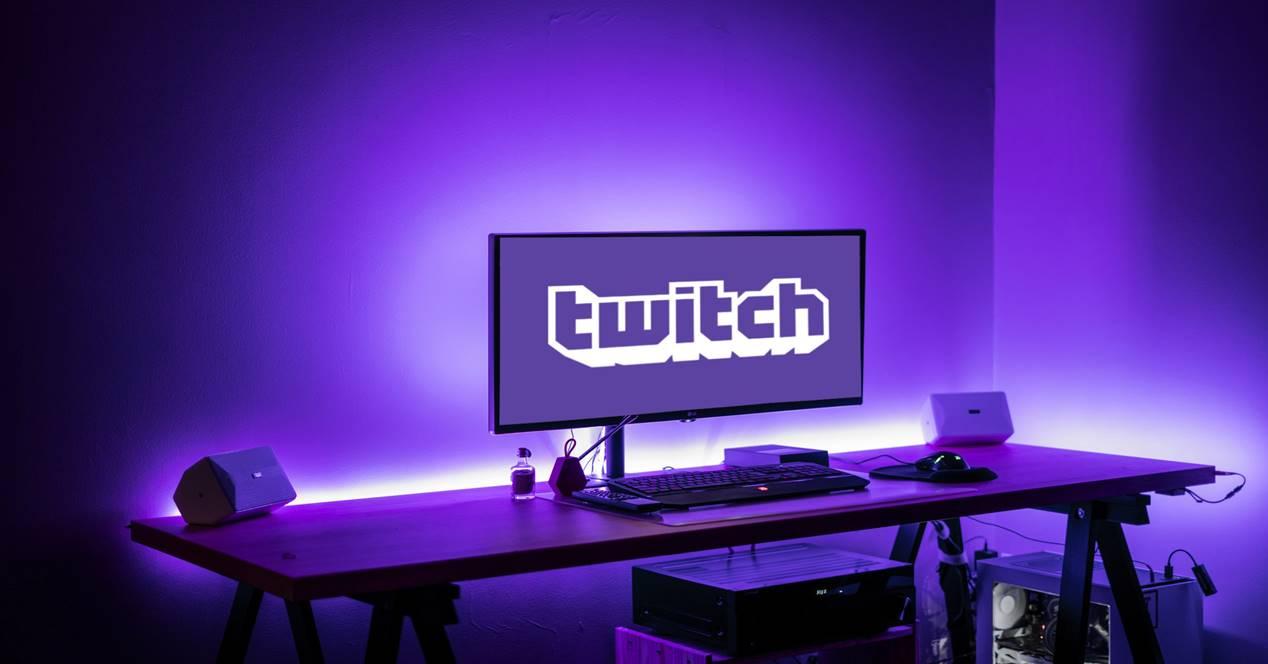Twitch is the world’s most widely used streaming platform, Amazon. Many spend many hours each day broadcasting their content in order to have a significant audience and audience. If you want to stream on Twitch, but don’t know how, you’re in the right place.
What do you need before you start?
Before you can start subscribing to Twitch to take the first steps, you need to know that you must meet certain details on your device in order to stream live. The requirements are as follows:
- Powerful PC. We recommend starting with a 6-core CPU, 16 GB of RAM and a graphics card less than RX 570 or GTX 1060. The quality of your content. Our recommendation is that you have a PC powerful enough to play at 1080p at 60 FPS, using Ultra graphics settings. Imagine that when we stream and play, the use of resources on our PC skyrocket, so it’s better than losing it.
- Monitors. We can go the extra mile and start with a single alert and watch our stream on a tablet or smartphone. However, it is recommended that you start with two monitors so that you can play and control your stream simultaneously.
- 6 MB / s internet connection at least 1080p and 60 FPS. We recommend fiber optics of about 100 MB onwards to avoid connection problems. However, you may have less and it works better for you. The minimum set by the 1080p Twitch at 60 FPS is 6000 Kbps.
- Sounds. We recommend that you purchase high quality headphones with microphone separately Because gaming headphones often do not have a good microphone (or at least not as good as the dedicated ones), which will impoverish the content we distribute.
- Webcam. It’s important to interact face-to-face with our audience, because people want to see people, not just the video game screen. After all, there is someone behind the broadcast and people want to meet them. Try to get you to provide a solution for 1080p and one 60 FPS.
- Software. You can choose XSplit, Streamlabs or the most recommended option to get started: OBS. We will explain the whole process with OBS because it is simple.
Set up our Twitch account
The first step to streaming is to create an account on the Twitch platform. As soon as we log in, we click the blue “register” button in the right corner and fill in the personal data (remember that username is the name to be displayed in the stream).
After that, we go to the OBS page to download its installer and start setting up our account. Once installed, you open it and you will see a configuration wizard appear when you can make good use of broadcast quality.
We will ask let’s connect i Twitch account or let’s use the broadcast key. In the past, no Twitch account could be connected, but we had to go to the control panel of our profile and enable the streaming key to stream live.
The opportunity to connect a Twitch account makes things a lot easier for us; If you do this, you will see that we will have to go to our post office to get the file 6-digit code. After that, the OBS will be adjusted so that the system is ready.
As you may have seen in the streams, the game screen is always displayed with a box where a web camera appears. In this box we always see the most attractive designs: this is called overlay. You can make it simple, name it in StreamElements, or have a designer do this.
You will see that OBS is divided into fonts and scenes, the following:
- Status. It is made up of the sources we choose from; that is, first the space is created and, within it, we select the resources to use. One scene can be an overlay, another transition and the last one can include streaming (camera, microphone, video game window, etc.).
- Sources. It is the equipment we will use for streaming, and the windows will be displayed. Sources are usually a microphone, webcam, game or a specific Windows window.
You will see that the OBS interface is accurate and easy add or remove fonts and scenes. You can do it with the buttons «+» and «-«, as if with a single right click.
Also, you will see that you can add endless fonts to each square, which gives us more space. In the case of Streamlabs, the same method is the same, but it is a very complete program because it incorporates themes, plugins, etc. Save this option if you have a large audience.
We only have cadjust the audio mixer to avoid distorting the microphone. To do this, you have to play microphone volume to prevent your viewers from hearing too much or distorting you. As a tip, view the Windows settings, go to the file task bar, opens the volume mixer and leaves by clicking on “System Sound”.
Now, go to tab «Record»And double-click on the left of your microphone. A new window will open, so go to «levels»Also check the volume and volume.
So with all the settings, you will have to click on «start streaming»And distribute content. You can use «start recording»Because it allows us to simulate broadcasting and check if everything is working properly, or if it sounds right.







